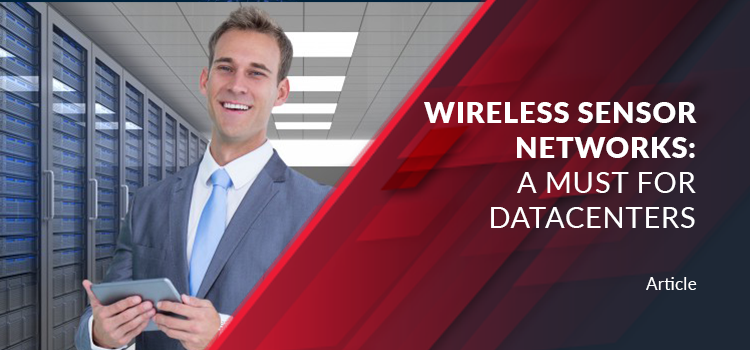In most datacenters today, the space conditions are controlled by the building automation systems. While these systems can give you temperature-related information through a dashboard, but these are not comprehensive enough because they require multiple cooling units for cooling space conditioning in datacenters and often these multiple units work independently of each other.
This means the building automation systems doesn’t measure the efficiency of each of these individual cooling units, so you’re not aware of the energy efficiency levels or the lack of it, within your setup.
If we talk about Wireless sensors, it gives you comprehensive information in real-time, so you can make the necessary decisions that will bring down your operational cost and at the same time, improve the overall efficiency of your operations. These sensors gather the necessary data, send it to a gateway device through a wireless network, and the gateway device eventually sends it to an analysis software for understanding and visual representation. The best part is you can have a sensor for every cooling unit or combine one or more into a group and have one for that group. It all depends on your system setup and compatibility.
Comparing both the technologies, sensors are more comprehensive and easy to set up and use. And that’s the reason why wireless sensors are a good option to stay on top of different performance metrics.
Improved efficiency
The server inlet temperature is a major factor to optimize your cooling system, so it is important to maintain a temperature that is optimal for your cooling system. You can get this inlet temperature through sensors and can even ensure that this temperature remains constant throughout. Some systems can even generate a graphical representation called heat maps to learn about the temperature profile of each cooling unit.
Needless to say, it will improve the overall efficiency of your cooling system and in the process, will help you to save money as well.
Flexible to use
The best part of sensor systems is that it just not measure cooling efficiency, but also temperature, humidity levels, debugging hotspots, pressure, air particle count, presence of liquid, electricity wattage, and more. The sensor systems are flexible enough to adapt to your requirements, the information you want to gather and monitor, the setup of your system, and the nature of your business. This flexibility of the wireless sensor system makes it powerful and appealing to any kind of business.
Maximum return on investment
Wireless sensors can give your business the best return on investment in numerous ways. Want to know how?
These sensor systems continuously monitor every aspect of datacenter operations, so that any leaks or problems could be identified at the earliest. After the issues are detected, you can proactively resolve issues before it could cause a major problem that can affect users.
Apart from predicting issues, sensor systems can help businesses save money on their utility bills because every aspect of operation such as temperature and pressure are always maintained at the optimal levels. Which in turn, reduces power consumption and lower utility bills.
Another reason why wireless sensors are a must for nowadays datacenters.
Identify and fix errors
Wireless sensor technologies are code in such a way that they can send alerts or notifications whenever certain threshold levels are breached. With the help of these early alerts, you can fix it before it starts affecting the end-users. Fixing the threshold levels issue beforehand can reduce downtime error in datacenters.












